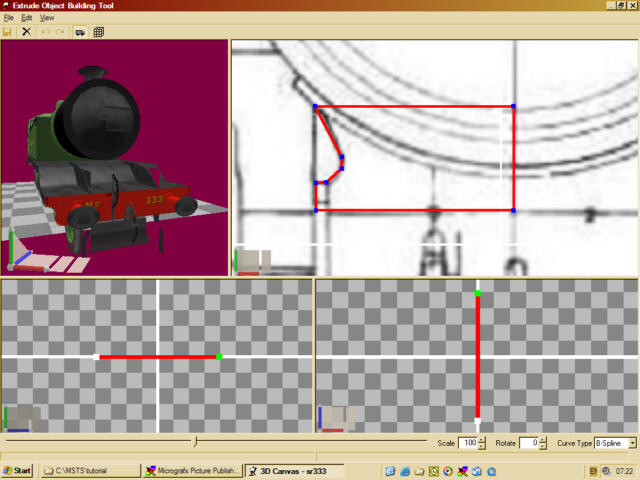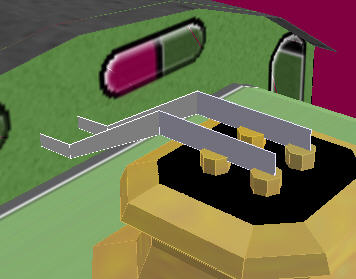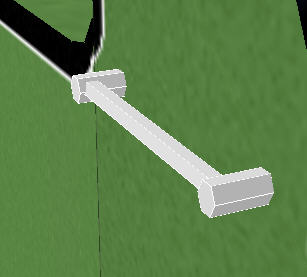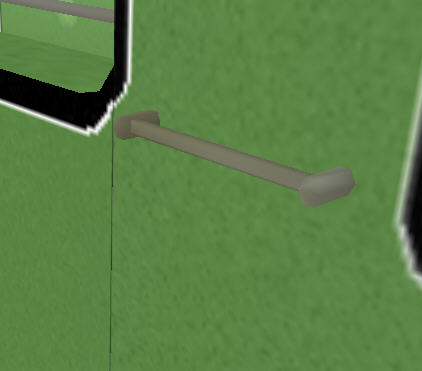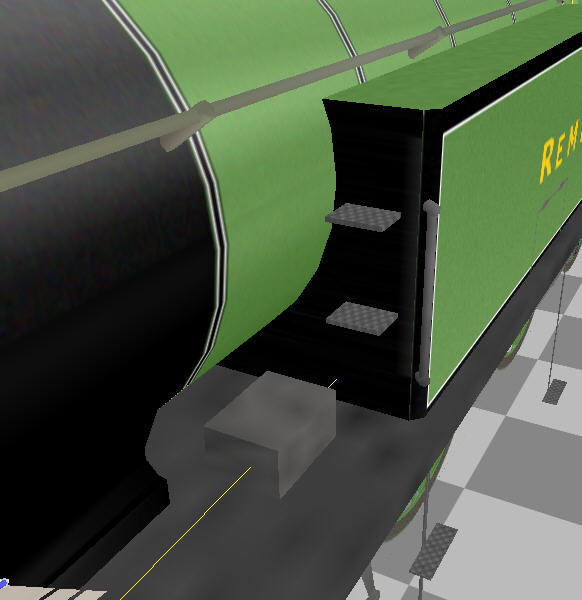A Steam Loco for MSTS Using 3DCanvas
by Paul "decapod" Gausden
Chapter 9 - Yet More Details
It is starting to get to the stage where adding the detail objects is becoming repetitive:
- Build the object
- drag the group to a parent for relative positioning
- when correct drag the object into its final group
- remove faces and optimise
- texture The only bits that change seem to be the build object part.
There are not many more techniques I make use of to build pieces. In general, if it is simple to build, then it is likely to be relatively efficient. I will describe a few more, but may leave out a few simple pieces I have already added.






